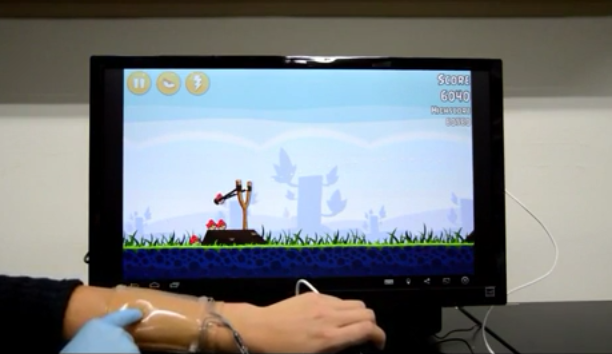
Researchers from Seoul National University in Seoul have just made it possible to play video games on a super-stretchy touchpad. The new display could lead to flexible, wearable devices with a variety of applications, though here we see it used for only gaming purposes.

In the past, researchers have explored a variety of conductors such as carbon nanotubes and metal nanowires for the development of stretchy touchpads. However, they are all based on hard materials. To help solve this problem, Chong-Chan Kim and fellow researchers created a touchpad made of hydrogel, a network of hydrophilic polymers that are soft and very stretchable. They used a polyacrylamide hydrogel containing lithium chloride salts, which act as a conductor and help retain water in the hydrogel.
The hydrogel contains electrodes on the ends of the hydrogel panel which apply similar voltages, to create a uniform electrostatic field across the system.
When a finger touches the panel, it closes the circuit within the hydrogel, allowing current to flow from both ends of the strip to the touch point. At each corner of the strip are meters that capture current to detect the electrical signals.
The researchers also created a controller board that facilitates communication between the ionic touch panel and a computer.
As you can see here in the video, using the touchpad, they were able to draw a stick figure, with the data conveyed onto a computer screen. With the thin touchpad placed on the researcher’s arm, they were able to write words and to play the piano and games. The touchpad was still able to operate when it was stretched to more than 1000% of its normal area, and it’s durable — after 100 cycles, the resistance was found to increase slightly, which the authors suggest may be due to water evaporation in the gel.
Story and videos via C.-C. Kim et al., Science (2016).

Comments are closed, but trackbacks and pingbacks are open.